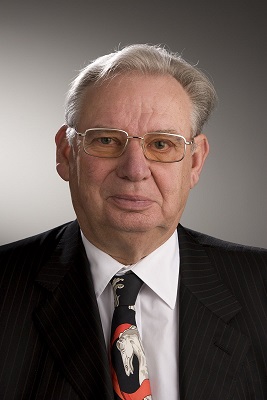How Low Can They Go?
In this lecture, the speaker will briefly discuss the claims made by PN equipment companies that claim to be measuring below the KT noise floor
using cross-correlation techniques. If the PN measurement equipment is in use after many correlations give a better number which one may like to see, it violates the laws of physics as we understand them and if it gives a worse number, then either the correlations settings need to be corrected or the dynamic range of the equipment is insufficient. We realize that this treatment is exhaustive, but it was necessary to
explain how things fall into place.
Date and Time
Location
Hosts
Registration
-
 Add Event to Calendar
Add Event to Calendar
- Contact Event Host
-
Ajay Kumar Poddar, Phone: (201)560-3806) (Email: akpoddar@ieee.org)
- Co-sponsored by MTT/AP-S
Speakers
 Prof. Dr. Ing. Habil Ulrich L. Rohde of Professor
Prof. Dr. Ing. Habil Ulrich L. Rohde of Professor
How Low Can They Go?
Noise is associated with all the components of the oscillator circuit; however, the major contribution of the noise in an oscillator is from the
active device, which introduces amplitude modulation (AM) and phase modulation (PM) noise. The conventional wisdom is to ignore AM component of the noise because of the gain-limiting effects of the active device operating under saturation, allowing only little variation in the
output amplitude due to the noise in comparison to the PM noise component, which directly affects the frequency stability of the oscillator and creates noise sidebands. But in reality, many oscillator topologies create significant AM noise, therefore effective noise contribution is the combination of 1/f spectrum with the 1/f ^2 effect in all PM, making the low‐frequency noise much greater, and that’s where the information in most modulated signals resides.
In this lecture, the speaker will briefly discuss the claims made by PN equipment companies that claim to be measuring below the KT noise floor
using cross-correlation techniques. If the PN measurement equipment is in use after many correlations give a better number which one may like to see, it violates the laws of physics as we understand them and if it gives a worse number, then either the correlations settings need to be corrected or the dynamic range of the equipment is insufficient. We realize that this treatment is exhaustive, but it was necessary to
explain how things fall into place.
Biography:
Ulrich L. Rohde, Dr.Ing. habil., is a Professor of RF and Microwave at the University of Cottbus, Germany, Chairman of Synergy Microwave Corp. NJ, USA, Professor at Oradea University, Romania, honorary professor at IIT Delhi, India; President of Communications Consulting Corporation, FL, USA, and a partner in Rohde & Schwarz, Munich, Germany. Dr. Rohde is past member of the board of directors and a former executive vice president of Ansoft Corporation, now it is Ansys. He is an IEEE life Fellow, published over 300 scientific papers in professional journals and conferences, co-authored of 12 technical books and book chapters, over 3 dozens patents into his credits and recipients of more than dozen scientific and IEEE society awards. In 2006, Dr. Rohde was honored as Microwave Legend by Microwave & RF Magazine; the selection was based on global voting. In 2009, Dr. Rohde was selected in the list of Divine Innovators of November 2011, Microwave Journal. Based on Dr. Rohde’s 5-decade of scientific creativity and pioneer contributions in the field of microwave and antenna, IEEE has established 2 awards on his name “IEEE Ulrich L. Rohde Innovative Conference Paper Awards on Antenna Measurements and Applications” and IEEE Ulrich L. Rohde Innovative Conference Paper Awards on Computational Techniques in Electromagnetics”. His hobbies are sailing, U.S. Merchant Marine Officer, Master of Steam or Motor Vessels, photography and ham radio (Dj2LR and N1UL).
Email:
Address:BTU Cottbus, Electrical Department, Cottbus, Germany, 03046

